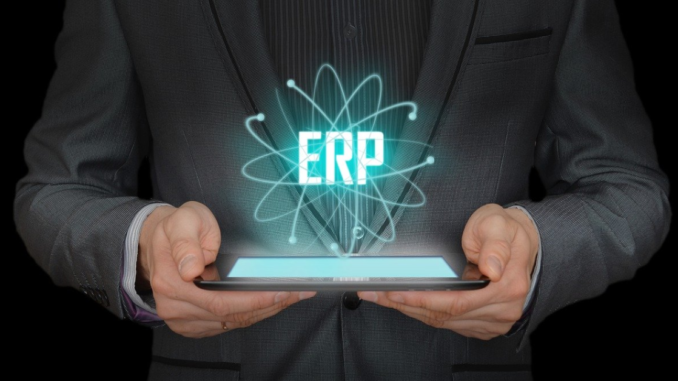

In today’s fast-paced and highly competitive business environment, organizations are increasingly turning to technology to streamline their operations and drive efficiency. One of the most powerful tools to achieve this is Enterprise Resource Planning (ERP) software. ERP systems centralize critical business functions into a single platform, providing real-time data and improving coordination across various departments. This post will explore what ERP systems are, their benefits, and how they can enhance your business operations.
What is an Enterprise Resource Planning (ERP) System?
Enterprise Resource Planning (ERP) software integrates different business processes and functions into one unified system. By centralizing key information, an ERP system helps businesses manage a wide range of operations such as finance, human resources, supply chain, inventory, and customer relationships. The goal of an ERP system is to improve efficiency, provide real-time insights, and facilitate decision-making across an organization.
Key Features of ERP Systems
ERP systems are equipped with a variety of features designed to meet the needs of different business functions. Here are the most important features of a typical ERP system:
1. Financial Management
ERP systems integrate financial management functions, such as accounting, budgeting, and forecasting. This feature helps businesses track expenses, revenue, and overall financial performance in real-time, ensuring financial accuracy and helping businesses make informed decisions.
2. Human Resources (HR) Management
An ERP system automates HR tasks, including payroll, recruitment, employee records, performance management, and benefits administration. This helps HR departments reduce administrative work and improve the employee experience.
3. Supply Chain Management
ERP software streamlines supply chain operations by managing procurement, inventory, production, and distribution. This leads to better coordination, reduced lead times, and improved order fulfillment, which enhances overall customer satisfaction.
4. Inventory and Warehouse Management
Managing inventory is crucial for businesses that deal with physical goods. ERP systems help track inventory levels, monitor stock movements, and manage warehousing operations. This ensures businesses maintain optimal inventory levels while minimizing stockouts and excess inventory.
5. Customer Relationship Management (CRM)
Many ERP systems integrate CRM features to help businesses manage customer interactions and sales processes. This enables businesses to maintain a centralized view of customer data, track sales leads, and improve customer service.
6. Reporting and Analytics
ERP systems provide powerful analytics and reporting tools that allow businesses to gain insights into their operations. From financial reports to production metrics, these tools help businesses monitor performance and make data-driven decisions.
Benefits of Using ERP Systems
Implementing an ERP system brings numerous benefits that can transform the way a business operates. Below are some key advantages of adopting an ERP solution:
1. Improved Efficiency
By automating routine tasks and integrating business functions, ERP systems significantly reduce manual work and improve operational efficiency. Employees spend less time on administrative tasks and can focus more on strategic initiatives that drive growth.
2. Better Decision-Making
ERP systems provide real-time access to data across various departments, allowing managers to make informed decisions based on up-to-date information. With accurate insights into inventory, sales, and finance, businesses can identify opportunities and address challenges promptly.
3. Cost Savings
An ERP system helps businesses reduce operational costs by streamlining processes, improving resource utilization, and minimizing waste. The ability to track inventory levels and manage supply chains efficiently also leads to lower storage and procurement costs.
4. Enhanced Collaboration
By centralizing business information in one system, ERP solutions foster better collaboration between departments. Sales, marketing, finance, and HR teams can all access the same data, leading to improved communication and coordination across the organization.
5. Scalability
As businesses grow, their needs become more complex. ERP systems are designed to scale with your business. With modular solutions, you can add new functionalities and expand the system to support new processes, products, or markets.
6. Regulatory Compliance
Many ERP systems help businesses adhere to industry regulations and compliance standards. From financial reporting to inventory tracking, ERP systems provide tools that ensure businesses meet local and global compliance requirements.
Types of ERP Systems
ERP systems can be categorized based on their deployment method and target market. Below are the main types of ERP systems:
1. On-Premise ERP
On-premise ERP systems are installed and hosted on a company’s own servers. Businesses have full control over the system’s configuration, security, and maintenance. This option is typically preferred by larger organizations that require more customization and control over their ERP solution.
2. Cloud-Based ERP
Cloud-based ERP systems are hosted on external servers and accessed through the internet. This option offers several advantages, including lower upfront costs, easier implementation, and the ability to scale quickly. Cloud ERP systems are often preferred by small and medium-sized businesses due to their cost-effectiveness and flexibility.
3. Hybrid ERP
Hybrid ERP combines elements of both on-premise and cloud-based systems. This approach allows businesses to maintain some aspects of their operations on-premise while taking advantage of the cloud for other functions. Hybrid ERP is ideal for businesses that require a combination of customization and flexibility.
How to Choose the Right ERP System for Your Business
Selecting the right ERP system is a critical decision for your business. Here are some factors to consider when choosing an ERP solution:
1. Business Requirements
Start by identifying your business’s specific needs. Do you need an ERP system to streamline financial processes, manage inventory, or enhance customer relationship management? Define your requirements and choose a system that meets those needs.
2. Ease of Use
The ERP system should be user-friendly and intuitive for employees at all levels. A complex system can lead to frustration and low adoption rates. Look for an ERP solution with a clean interface and easy navigation.
3. Customization
Every business has unique processes. Choose an ERP system that allows for customization to align with your specific workflows and business operations. Some ERP systems offer modular solutions that allow you to add or remove features as needed.
4. Integration Capabilities
Ensure that the ERP system can integrate with other software applications you are currently using, such as CRM tools, e-commerce platforms, or third-party services. Seamless integration reduces data silos and improves overall efficiency.
5. Scalability
Select an ERP system that can grow with your business. Whether you plan to expand into new markets, launch new products, or hire more employees, the ERP system should be able to scale to meet your evolving needs.
6. Customer Support and Training
Choose an ERP provider that offers reliable customer support and training resources. Your team will need training to get up to speed with the new system, and ongoing support is essential to address any technical issues.
Steps to Implement an ERP System
Implementing an ERP system requires careful planning and execution. Follow these steps to ensure a smooth ERP implementation:
1. Define Your Objectives
Before implementing an ERP system, clearly define the goals you want to achieve. Are you looking to reduce costs, improve efficiency, or enhance collaboration? Setting clear objectives will help guide the implementation process.
2. Select the Right ERP Solution
Based on your business requirements, select an ERP system that aligns with your needs. Consider factors such as functionality, scalability, ease of use, and support.
3. Plan for Data Migration
Migrating data from existing systems to the new ERP solution is a critical step. Ensure that data is cleaned, validated, and mapped correctly to avoid issues during migration.
4. Train Your Team
Provide comprehensive training to your team to ensure they are comfortable using the new ERP system. This will maximize user adoption and help your employees fully leverage the system’s capabilities.
5. Monitor and Optimize
After implementation, continuously monitor the ERP system’s performance and gather feedback from users. Make adjustments and optimizations as needed to ensure the system is delivering the desired results.
Conclusion
Enterprise Resource Planning (ERP) systems are powerful tools that can transform the way businesses operate. By integrating key functions such as finance, HR, inventory management, and sales into one platform, ERP systems streamline processes, improve decision-making, and foster better collaboration across departments. When selecting an ERP solution, consider factors such as business requirements, scalability, and ease of use. With the right ERP system in place, your business can improve efficiency, reduce costs, and position itself for long-term growth and success.


Leave a Reply